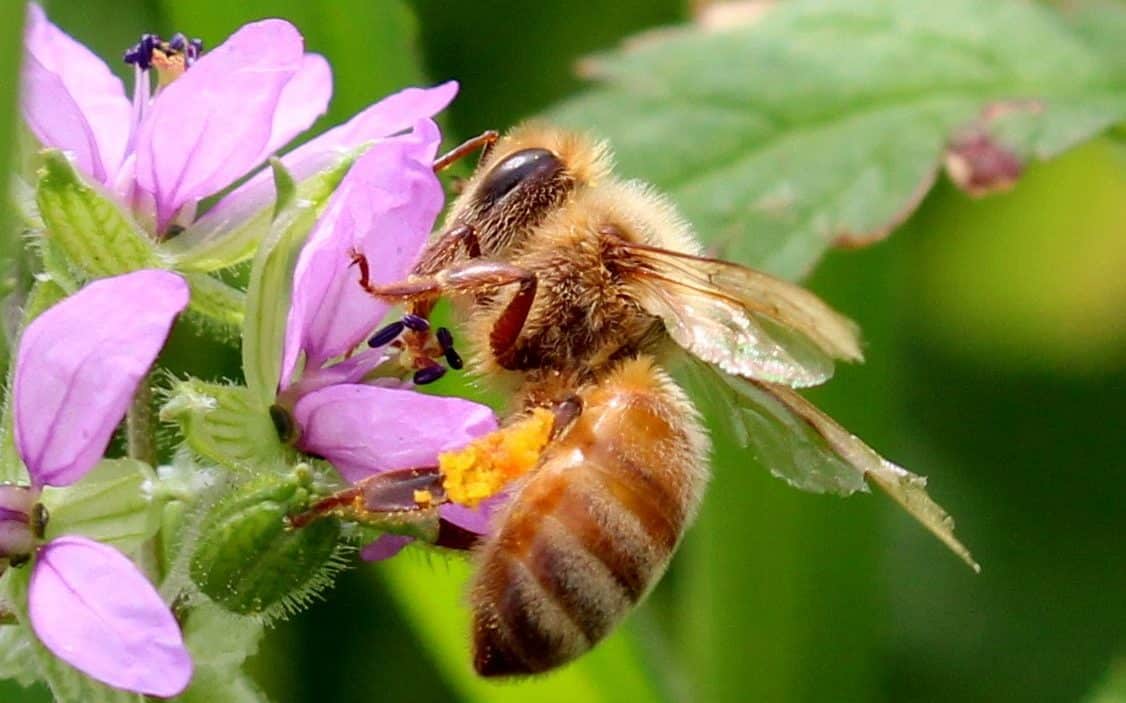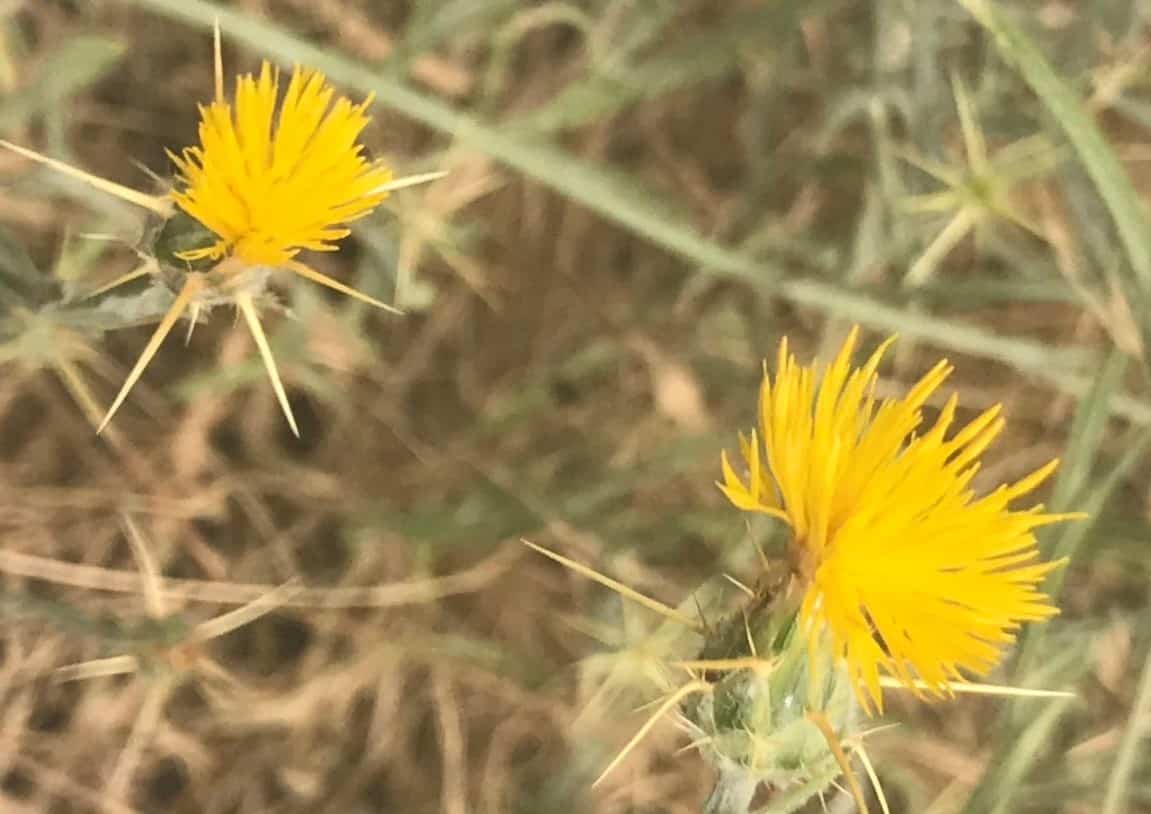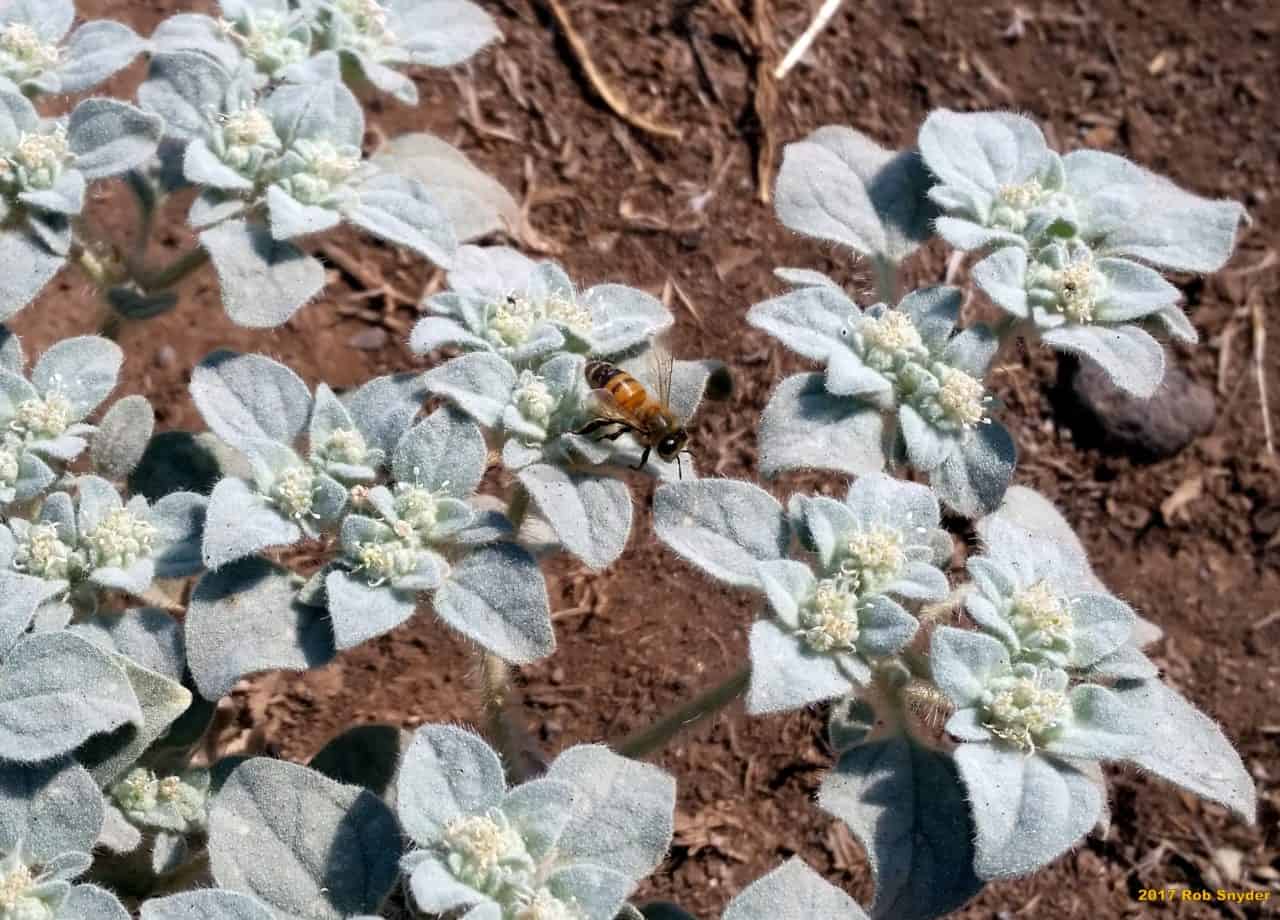A colony of bees is capable of producing honey from a stunning variety of floral sources, but a few years back, when a beekeeper in New York told me his bees were in the midst of making a good fall crop on the bamboo, I was a bit puzzled. Knowing that bamboos belong to the grass family (Poaceae), I questioned a little further about how it was possible for bees to make honey from a grass, and the beekeeper pointed to a patch of dense, shrubby plants covered in white flowers and bees. Continued questioning eventually got to the answer that the “bamboo honey” was…
Category: Honey Bee Forage
Latest Spring Fashion – Blue Pollen
Photo: Dan Wyns
Early spring can be a time requiring patience for beekeepers in northern locations. The weather can be volatile, but the occasional sunny days bring about bee activity. As a beekeeper it can be tempting to open hives and start digging around once you see some flight activity, but the reality is that you may end up doing more harm than good at this stage. Sometimes the best thing you can do as a beekeeper is leave them alone. If you really must do something bee related on a sunny spring day, try just observing the entrance and see what your bees are gathering. On a…
Honey Mustard or Mustard Honey?
Honey bees need an abundance and diversity of floral resources to grow and thrive throughout the season. In areas of intensive agriculture, like the almond orchards of California, forage can be scarce before and after the primary cultivated crop blooms. One of the pollinator friendly plants that is often seen in and around orchards and agricultural fields is mustard. The common appearance is due to both deliberate planting as a cover crop and the plant spreading through self-sowing. There is a great deal of research going into developing cover crop seed mixes to supplement forage before and after almond bloom. Many of these seed mixes…
A Look At Filaree As A Forager Food
The vast majority of the commercially managed honey bee colonies in the United States spend February and a portion of March pollinating almonds in the central valley of California. Almond pollen is very nutritious, and colonies build well on it when favorable weather conditions prevail during bloom. The weather during almond pollination season in 2020 was very favorable, and colonies made significant increases in both population and food reserves during the bloom period. While warm and dry conditions this year led to a good nut set, it did mean that bloom progressed quickly, and once finished there were limited flowers available. By working in various…
Yellow Star Thistle Produces Green Honey
Yellow star thistle (Centaurea solstitialis) was extremely prolific in some areas of California this year. Many commercial beekeepers commented on it. One said that he hadn't seen this much star thistle in over 20 years. Personally, I saw huge fields of it all over the Sacramento Valley, from Redding down to Davis. Further south, I didn't see nearly as much as it is considered a noxious weed and invasive species, and the eradication programs may be working well in the southern regions. Yellow star thistle originates from the Mediterranean. The similar climate of the Central Valley makes it ideal for it to grow. According…
Empty Calories
Somewhere early on in a “Beekeeping 101” class you’ll learn that honey bees forage for 4 things: nectar, pollen, propolis, and water. The nectar and pollen become honey and bee bread to provide sustenance. Propolis is used as a structural component and also contributes to colony health through immunological activity. Previous blog posts about propolis here and here provide more information. Water is necessary for a variety of purposes including preparation of brood food and evaporative cooling. So in addition to water, bees need 3 substances produced by plants. But do they collect anything else? Of course they do. If you’ve ever seen open syrup…
2019 California Spring Update
Many California beekeepers reported that the start of this year was the worst in 20+ years. Several factors contributed to this year’s issues, starting with the numerous fires last year causing nearly 3 months of smoke in the area. Once the days got longer, queens started laying but the temperatures dropped again and egg laying stopped once more resulting in smaller colonies after almonds. In fact, most colonies were 2-3 weeks or even a month behind, which delayed the start of queen production. Many producers had to source bulk bees from beekeepers further south to begin starters, builders and nucs. Once queen producers started generating…
Northern California Summer Update 2017
In northern California, after a wet winter and spring it has been a really dry and hot summer. In the spring I saw a lot more chalkbrood than normal, something that was noted nationwide by our other teams. Below are a few images of some of the worst cases photographed. It has been the hottest summer in the 6 years I have lived in northern California, with many weeks above 100F. I was able to document how dry it has been this summer as I traveled around and sampled honey bee colonies for BIP. Other than the heat, beekeepers in northern California have been dealing…
Lucky-hit Nectar in Creeping Charlie
In the twin cities, spring brings complaints- about creeping charlie taking over lawns, strangling garden plants, and being generally relentless. But is the creeping charlie flower a good source of food for bees? In researching creeping charlie, we uncovered a fascinating story about this invasive plant’s strategy to draw insect pollinators. Creeping charlie draws a lot of insect visitors, including bees. Sweat bees, bumble bees, and honey bees are among its most popular insect visitors. Creeping charlie flowers have an interesting strategy for rewarding pollinators. This strategy is called “lucky hit.” They produce nectar with an average volume of 0.3 mL per flower, but the…
Carolina Jessamine Part 2: does it harm native bees?
This is my second post on the Carolina jessamine plant. The first post covered the effects of Carolina jessamine pollen on Honey bee colonies. The adult bees can become less active and die, and brood can die as well. But the Carolina jessamine plant is native to the Southeast United States. Honey bees are not. They were brought to the Americas by humans. This means that honey bees have not co-evolved with Carolina jessamine the way that native bees have. Do the chemicals in the plant affect native bees as well? I did a literature search to look for answers to this question. I was able to find…





